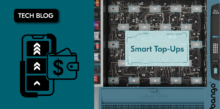Why subscription products must optimize physical and mental availability and continue to focus on customer acquisition
by Giles Tongue | 05 Jun 2025
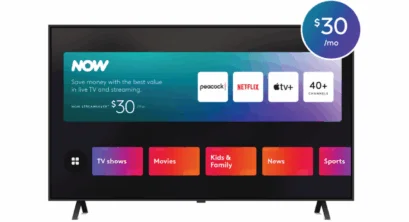
The subscription economy is now expected to be worth $1 trillion by 2028, thanks to the evolution of business models to recurring charges rather than one-off payments, the growth of subscription based product categories and the success of some of the leading subscription categories such as Subscription Video on Demand.
Subscription leader Netflix is driving revenues of $39 billion with over 300 million customers and a marketing spend of nearly $3B (discussed in this blog). The subscription world is quietly growing fast and at scale. Big Tech are now the biggest players – think YouTube Premium and YouTube TV, Apple TV+ and Apple Music, Microsoft M365 and Xbox Game Pass, Amazon Prime – all building products and growing market share rapidly, all of whom wield enormous marketing budgets.
But what is the purpose of this huge marketing spend?
Customer acquisition in the consumer products world
In the seminal book How Brands Grow, Byron Sharp’s research based approach emerging from the Ehrenberg-Bass institute, is that to grow a brand, there are two levers to pull – ‘Physical Availability’ and ‘Mental Availability’. If a brand owner can maximize both, they optimize for growth.
The most vivid example is that of the drink brand, Coca-Cola. Famous for its focus on both brand distribution and building emotional connections to drinking occasions, Coca-Cola has mastered both dimensions.
The mastering of Physical Availability is best illustrated with their stated ambition to be “within arms reach of every person on earth” – which means formidable distribution, being in every grocery store, every corner store, every restaurant, cafe, kiosk and vending machine – wherever there is a drinking occasion, Coca-Cola want to be there. I recall travelling around rural Kenya in the late 90s, I would regularly encounter Coca-Cola and Fanta being sold from a box mounted to a bicycle, in the most remote places.
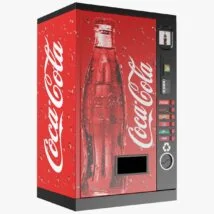
Mental availability is about being front of mind when thinking of buying. Coca-Cola has mastered this with ubiquitous visibility – on bus stops, vending machines, soft drink pumps, menu cards, huge shelf displays in stores and at events and also building association with multiple consumption occasions. Think of the saliency of their advertising over the years “I’d like to buy the world a Coke” from back in the 70s, through “holidays are coming” attaching the brand to holidays (Christmas) for generations.
Coca-Cola seems to be everywhere, all the time, and constantly attracting us back to their brand (and away from other options).
Double jeopardy law
Sharp’s work goes on to show, based on studies from FMCG (CPG) and then other categories, that there are far more light buyers than there are heavy buyers for brands, which translates to the business goal being to constantly acquire customers, rather than focus on loyalty and pushing buyers to buy one more time. Optimizing for the light or not-yet buyers, than the repeat buyers.
The other finding here was that consumers are rarely loyal to one brand, and most people have a repertoire of brands they are happy to switch between. He found that as you increase your penetration (get more new customers), as a by-product you also drive up loyalty, however the inverse is not true, driving up loyalty does not bring in new customers.
The ‘Double Jeopardy Law’ specifically here is that smaller brands have far fewer buyers (first) and that they have slightly less loyalty (second). So the more customers you acquire, the more loyalty you naturally build. When you increase your penetration (times bought), you also increase your loyalty.
So he concludes that marketers should spend little time focusing on loyalty. Instead focus on growing the number of people who buy your product, and the loyalty will come as a symptom. We’ll come back to this.
Customer acquisition in the subscriptions economy
Subscription products are digital in nature on the whole, and usually the purchasing and payment – the buying moment – is digital.
This means the “physical availability” dynamic for a subscription product is interesting in that the buying and ongoing payment can be handled entirely by a third party – which can bring significant opportunity, including to increase access to products and simplify payment.
In the first generation of digital subscriptions, buying a subscription typically meant being listed in the iOS/iTunes App Store or Google Play store. The advantages of being in an app store meant instant distribution to the world, and simplified payment and management of an ongoing recurring subscription.
Product owners would then fight for position in the App Store so if a consumer used search within the App Store, they’d either find your brand because your App Store Optimization (think SEO) was excellent or you’ve paid to appear at the top of their search terms much like bidding high in Google AdWords.
Distribution in this sense, was very simple – App Stores.
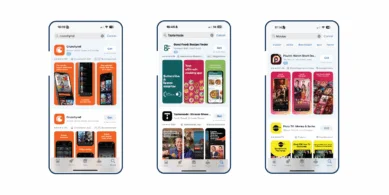
App Stores as well as giving subscription products access to every potential consumer with a smartphone, they also give a very simple way of making recurring payments and reducing possible friction on the way to making purchases.
Evolution of physical availability and distribution in the subscriptions economy
However, in recent times the possibility to be distributed outside of the App Store has evolved, for example subscription products can be sold on a brand’s own website (e.g Netflix.com).
Also bundling is becoming easier – being sold via a third party.
For example, mobile operators often give away or sell content to their consumers. Think of the last time you signed up to a mobile contract, perhaps you were given access to Netflix for free, included in your mobile contract, known as a bundle, or even “hard bundle” when inseparably included at no extra cost.
Perhaps the mobile operator also then offered to sell you other products. Or they may even have a content hub with multiple subscription products to choose from, making it easier to pay for and manage multiple subscriptions in one place, in what’s known as Super Bundling. See Optus SubHub as an example, which offers over 20 third-party subscription products to its consumers.
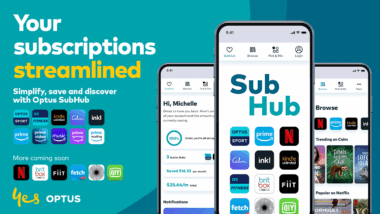
So opportunities to enhance physical availability have now increased for subscription products. It is possible to reach more consumers where they are already, through third-party distribution, as well as maximising your own channels. Some brands have even left the App Stores altogether.
‘How Brands Grow’ advocates for reaching all your potential buyers who could be buying today, so brands should maximize the use of channels where reaching customers is easy and affordable – ensure that your product is as easy as possible to buy for the most possible people. This certainly applies to subscription products and their use of third party channels.
As it becomes easier to sell through third parties, partnerships and partnership marketing becomes more straightforward and easier to execute, such as bundling through mobile operators, banks and retailers, or even with other complementary services.
Mental availability and the subscriptions economy
Mental availability, when it comes to subscription products, has interesting implications.
When first acquiring a customer a brand or product must be appealing and front of mind, specifically driving brand recall when it comes to purchase.
Sharp advocates for leveraging category entry points – solving a particular need, for example, let’s take Duolingo, the language app which helps people to learn a new language, or the product provides access to a particular show (e.g Yellowstone via Paramount+) or has a broader appeal to subscribers like providing access to huge TV and movie library for reliable entertainment (e.g. Netflix) or narrower appeal perhaps fulfilling a niche interest (e.g. Anime via Crunchyroll).
Multi-service products are adding more and more features, to maximize their number of category entry points. Netflix now includes some live sport and gaming, Spotify includes music, podcasts and audiobooks.
The executional marketing plan, depending on the product and the consumer, could include TV advertising or Out Of Home (billboards), print and digital display advertising. Coupled with salient marketing campaigns, brands can also drive association with usage occasions, Coca-Cola with the holidays season is a famous example, perhaps Duolingo linked with a motivation to travel.
Optimizing physical availability in the subscriptions economy
So when we think about physical and mental availability in the context of subscriptions they’re directed at acquiring customers and given the nature of how products can be sold, the tools and channels available are quite different.
This brings an entirely different meaning and understanding to our product, the Digital Vending Machine® from Bango, which enables bundling at speed and scale.
Where once the DVM product name described the ecosystem of subscription products and resellers who can leverage our product to enable fast and efficient bundling, now we might use the same metaphor to describe reach through our global ecosystem, in the sense of Coca-Cola’s use of vending machines.
Where Coca-Cola wants to be in the hallway of the gym as you’re leaving and there’s no shop, or in the dinner hall at a school, they simply place a vending machine. Coca-Cola everywhere, all the time. A bit like the Digital Vending Machine® from Bango ensuring your reach is maximized, ensuring your physical availability is maximized.
So for a subscription product to maximize physical availability, means to optimize one’s own D2C channels, and optimize the use of third party channels which can deliver cost efficiency reach and simplified payments (adding to an existing phone bill for example).
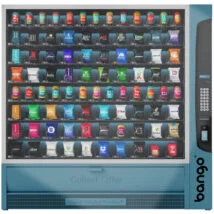
Are major subscription brands beyond the era of customer acquisition in the subscription economy?
The work of Byron Sharp identifies that customer acquisition is a very important business goal – there are likely to be far more light users than there are heavy users – the data tells us that brands that continue to acquire customers are adding more to their business than simply subscriber count.
Netflix continues to spend multiple billions on marketing, taking actions to ensure both physical and mental availability. While they have chosen to no longer report on subscriber count, this should not be assumed to be an indication that they are no longer pursuing customer acquisition.
Summary: why customer acquisition still rules the subscription economy
As the subscription economy accelerates toward a projected $1 trillion valuation by 2028, major players like Netflix, Apple, Amazon, and Microsoft are investing heavily in customer acquisition. Drawing from Byron Sharp’s How Brands Grow, the path to sustainable growth lies in maximizing physical and mental availability to continually attract new buyers.
In Sharp’s research, brands grow by being easy to buy and easy to recall in buying moments and subscription services are no different. Historically, digital subscription products relied on app stores for distribution. But today, new distribution pathways have emerged including direct-to-consumer (D2C) models, partnerships with mobile operators, and bundling through indirect channels like Super Bundling platforms.
This evolution in physical availability now mirrors the classic example of Coca-Cola’s distribution vision to be everywhere your customer could want you. In the subscription world, that’s what the Bango Digital Vending Machine® enables: achieving presence in multiple indirect channels, quickly and at scale.
Mental availability, too, is being actively pursued. Brands align with moments of need, whether it’s learning a language before a trip (Duolingo) or relaxing with a blockbuster (Netflix). Marketing dollars are being used not just to push content, but to stay top-of-mind across more usage occasions.
Sharp also debunks the overemphasis on loyalty. His ‘Double Jeopardy Law’ shows that the best way to earn loyalty is to grow penetration: more users leads to more usage. Focusing on the light or non-user yields the most returns. Subscription brands should heed this lesson: retention is a consequence of growth, not a strategy for it.
Conclusion: indirect channels and bundling are the growth engine for subscriptions
Byron Sharp’s insights offer a clear directive to subscription brands: customer acquisition must remain your top priority. And to achieve that, you must relentlessly optimize both mental and physical availability.
In today’s ecosystem, that means going beyond traditional D2C or app store models. Brands must meet subscribers where they already are – within mobile contracts, on broadband portals, through bank reward programs, or inside Super Bundling platforms. These indirect channels not only reduce friction at the point of purchase but also unlock new reach and marketing efficiency.
This is where the Bango Digital Vending Machine® comes in. Just as Coca-Cola placed vending machines in every conceivable consumption context, subscription brands must now place their offers across every viable digital shelf, from telcos to retailers to banks. The era of relying solely on direct acquisition is over. The brands that win in the subscription economy will be those that embrace indirect distribution and bundling, giving customers easier access, lower friction, and more reasons to say “yes.” Growth isn’t just about being known, it’s about being available. Everywhere.
Subscribe to our newsletter
Get the latest subscription bundling news and insights delivered straight to your inbox.



